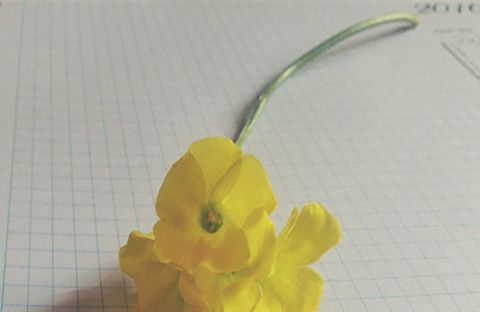备战2007年中考英语·十大词类复习全攻略一
|
英语中的词可以根据词义、语法功能和形式特征分为十大类,即名词(noun)、代词(pronoun)、形容词(adjective)、副词(adverb)、动词(verb)、数词(numeral)、冠词(article)、介词(preposition)、连词(conjunctions)和感叹词(interjection)。 一、名词(n.) 表示人、事物或抽象概念的名称的词 (一)名词的分类 名词分为普通名词和专有名词,其中普通名词包括可数名词和不可数名词,可数名词可用作单数,也可用作复数。 可数名词包括个体名词(表示一类人或物的个体。如:boy,desk,cat,window)和集体名词(由若干 个体组成的集合体。如:family,class,police)。 不可数名词包括物质名词(表示无法分为个体的实物。如:water,paper,silk,money)和抽象名词(表示性质、行为、状态、感情或其它抽象概念。如:work,happiness,music,difficulty,housework) 专有名词表示个人、地方、机构、组织等。如:Tom,the Great Wall,the Spring Festival,France,the United States) (二)名词的数 1.可数名词有单数和复数两种形式,其复数形式的构成主要有以下几种: (1)一般情况下,在词尾加s. eg.book——books,dog——dogs,pen——pens,boy——boys 以轻辅音结尾的名词后的s的读音为[s],以浊辅音和元音结尾名词后的s读音为〔z〕。 (2)以s,x,ch,sh结尾的词名词变复数时,要在词尾加es. eg.beach——beaches,brush——brushes,bus——buses,box—boxes(es读音为〔iz〕 (3)以“辅音字母+y”结尾的名词,先变y为i,再加es. eg.city——cities,family——families,documentary——documentaries,country——countries, strawberry——strawberries(ies读音为[iz]) (注:以“元音字母+y”结尾的词,直接在词尾加-s.eg.boys,holidays,days) (4)以元音字母。结尾的名词,变复数时情况如下: ①加eg.tomato—tomatoes,potato—potatoes ②结尾是两个元音字母的加s,eg.zoo—zoos,radio——radios ③某些外来词变复数时词尾加s,eg. piano—pianos ④一些名词的缩写形式变复数时,词尾加s, eg.photo(photograph)——photos,kilo(kilogram)kilos ⑤zero变复数时,既可加s,也可加 eg.zeros/zeroes (5)以f或fe结尾的名词变复数时,先把f或fe变为v,再加es. eg.wife——wives,leaf leaves,half——halves,knife—knives,thief——thieves(res读音为[vz] (注意:roof的复数为roofs; scarf的复数为scarfs/scarves) (6)有些名词由单数变复数时,不是在词尾加s或es,而是变换其中的字母。 eg.man——men,woman——women,policeman——policemen,Englishman——Englishmen,Frenchman——Frenchmen, foot——feet, tooth——teeth, child——children,mouse—mice,Ox—Oxen(公牛) (7)还有一些名词的单数和复数形式相同。 eg.Chinese,Japanese,sheep,deer,fish (8)另一些名词本身即是复数形式,不可用作单数。 eg,people,police,trousers,pants,clothes,scissors 另外,①当一个名词作定语说明另一个名词时,这个名词一般用单数。 eg.an apple tree,five apple trees,a girl friend,two girl friends,a twin sister 但是,当man和woman作定语修饰复数名词时,就要用其复数形式。 eg.two men teachers,three women doctors ②可用“量词+of+名词复数”这一结构表示可数名词的数量。 eg.a room Of students,two boxes Of pencils 2.不可数名词一般没有复数形式,它的“量”的表示方式如下。 (1)表不定数量时,一般用much,(a)little,a lot of/lots of,some,any等词修饰。 eg,much money,a little bread (2)表确定数量时,一般用“数词+量词+of+不可数名词。如:two/three/…+量词复数十of+不可数名词。 eg.a bag Of rice,two glasses Of milk,four bottles Of water 3.有些名词既可作可数名词也可作不可数名词,但词义有所不同。 eg: fruit水果——fruits表示不同种类的水果;food食物——foods各种食品;fish鱼——fishes鱼的种类;drink饮料、酒——a drink一杯/一份饮料、一杯酒; cloth布——,a cloth桌布、抹布; sand沙——sands沙滩; tea茶——a tea一杯茶;chicken鸡肉——a chicken小鸡;orange橘汁——an orange橘子; glass玻璃——a glass玻璃杯,glasses眼镜; paper纸——a paper试卷、论文;wood木头——a wood小森林;room空间、余地——a room房间 (三)名词的所有格(表示人或物的所属关系) (1)有生命的名词所有格以及表示时间、距离、城镇、国家等的名词所有格。 ①不是以s结尾的名词变成所有格时,在词尾加’s. eg.Mike’s watch;Women’s Day ②以s结尾的名词变成所有格时,只加’。 eg.teachers’office,students’rooms ③两个或两个以上名词并列,表示共同所有,只需在最后一个名词后加’s. eg.Tom and Mike’s room汤姆和迈克的房间(表示汤姆和迈克共有一间房) ④两个或两个以上名词并列,表示分别所有,需在几个名词后都加’s. eg.Mary’s and Jenny’s bikes玛丽和詹妮的自行车(表示玛丽和詹妮各自的自行车) (2)无生命的事物的名词所有格常用of结构 eg.a map Of China,the beginning Of this game,the door Of the room (3)特殊形式 ①可用’s和of短语表示的名词所有格 eg.the boy’s name=the name Of the boy(男孩的名字) the dog’s legs=the legs of the dog(狗的腿) China’s population=the population Of China(中国的人口) China’s capital=the capital of China(中国的首都) ②双重所有格 eg.a fiend of my mother’s我妈妈的一个朋友 a picture of Tom’s汤姆的一张图片 代词(pron.)代替名词 (一)代词的类别 相互代词 each other,one another 指示代词 this,that,these,those 不定代词(不指明特定的人或事物的代词)each,every,both,all,either,neither,none,no,one,(a)few,(a)little,some,any,many,much,other,another 复合不定代词everybody,somebody,anybody,nobody,everyone,someone,anyone,no one,every-thing,something,anything,nothing 疑问代词 what,who,whom,which,whose 直接代词 疑问代词都可作连接代词,引导宾语从句。表语从句等。 关系代词 who,whom,whose,that,which用引导定语从句。 (二)代词的用法 1.人称代词、物主代词、反身代词、相互代词和指示代词的用法 (1)人称代词有主格和宾格之分,主格用来作主语,宾格用来作动词或介词的宾语等。 eg. She gavemea red apple.她给了我一个红苹果: (She作主语,me作动词宾语) Kathy is near him.凯西靠近他。(介词near的宾语) 2.物主代词有形容词性物主代词和名词性物主代词之分。 ①形容词性物主代词位于名词前:their school,his backpack ②名词性物主代词相当干一个名词,在句中可作主语、宾语等,后面不能再接名词。 egIt isn’t my pen.→Mine(=my pen) is missing.(作主语) I left my pen at home. You can use hers(=her pen),(作宾语) ③“of+名词性物主代词”属双重所有格的一种形式。 eg.a cat of hers她的一条狗,a friend of yours你的一个朋友 (3)反身代词 ①反身代词在句中可作同位语,起强调作用,也可作动词或介词的宾语。 eg.A few days later,I myself had to go to Paris.(作同位语) She bought herself a new bag.(作动词宾语) He’s not worried about himself.(作介词宾语) ②带有反身代词的常用短语。 teach oneself 自学 help oneself to 随便吃些…吧 say to oneself 自言自语。 learn……by oneself 自学… enjoy oneself 过得愉快 leave one by oneself 把某人单独留下 hurt oneself 伤了自己 dress oneself 自己穿衣服 come to oneself 苏醒过来 (4)相互代词 ①表示相互关系,可用作动词或介词的宾语,用法区别不大。 eg. For years, the two sisters looked after one another(each other)。多年来姐妹俩互相照顾。 We should learn from each other. 我们应当互相学习。 ②可以用格表示所有关系:each other’s, one another’s互相的,彼此的 eg.They are looking at each other’s pictures.他们相互看对方的照片。 (5)指示代词 ①指示代词有单复数之分,既可指物,也可用于介绍人。 eg. This is an apple tree,and that is an orange tree.这是一棵苹果树,那是一棵桔子树。 These are my friends,and that is my sister.这些是我朋友,那个是我姐姐。 ②指示代词可用来指上文中提到的事情: eg.Steve had a bad cold.This/That was why he didn’t come to school yesterday. 2.不定代词的用法 (1)each,every,both,all,either,neither,no,none的用法 ①each“每个/各个”(强调个体),用于两者或两者以上。 eg.Two girls came and l gave an apple to each.来了俩姑娘,我给她们每人一个苹果。 Each of them has a nice ring.她们每人有一枚漂亮的戒指。 ②every“每个/各个”(强调全体),用于两者以上。every常作形容词用。 eg.Everyday is important to us.每天对我们都很重要。 He has read every book(all the books) On the subject.他阅读了所有有关这个主题的书。 ③both表示两者“都”(强调全体)。 eg.Her parents are both doctors.她父母都是医生。 Both of them are doctors.他俩都是医生。 They both like potatoes.他俩喜欢吃土豆。 ④all“全体/大家/一切”用于三者以上,也可接不可数名词。 eg.That’s all for today.今天到此为止。 All of us are from China.我们都来自中国。 All the food is delicious.所有的食物都很好吃。 ⑤either“两者之一”,用于两者(强调个体)。 eg.The two coats are cheap,so you can choose either of them.那两件外套不贵,你可以随便挑一件。 ⑥neither“两个都不”,用于否定两者。 eg. Neither Of the books is/are so interesting.那两本书没一本好看的。 ⑦no(=not any/not a)“没有”可接可数名词单复数,也可接不可数名词。 eg.I have no brothers Or sisters.我没有兄弟姐妹。 A clock has no mouth,but it can talk. 钟表没有嘴,但能说话。 There is no fire without some smoke.有火就有烟。 ⑧none“没有一个人/物”用于否定三者或三者以上的可数名{司。 eg.None Of them has/have been to Japan.他们都没去过日本。 I like none of the books.这些书我全都不喜欢。 ⑨neither和none表示完全否定;all,both,each和every(含every的复合词)等与not连用时表示部分否定。 eg.I don’t know all of you.我不完全认识你们。 Not everyone Of us know how to go there.不是我们每个人都知道怎样去那儿。 (2)one,ones和no one的用法 one用来代替前面刚提到的一个东西或一个人,以免重复;复数ones用来代替前面提到的一些物或一些人;no one表示否定。 eg.——Would you please pass me the science book?给我递过那本科学方面的书好吗? 一Which one?哪一本? 一The one on my shelf.我书架上的那本。 No one has traveled farther than to the moon.没有人旅行远过月球。 (3)(a)few,(a)little;many,much;some,any的用法 ①many(+复数名词),much(+不可数名词)表示“许多/很多”。 eg.Many Of the students come from England.那些学生许多是从英国来的。 Thanks,it’s too much for me.谢谢,我承受不起。 ②few(+复数名词),little(+不可数名词)表示“没多/很少”(表否定)。 eg,There were few people in the street last night.昨晚街上没什么人。 I am very worried that l have little time to finish the job.我担心,我几乎没有时间完成这份工作了。 ③a few(+复数名词),a little(+不可数名词)表示“有一些/有几个”(表肯定)。 eg.I call see a few cakes and a little bread inthe fridge.我看到冰箱里有几块蛋糕和一些面包。注意:quite a few表示“相当多” eg.There are quite a few students over there.那儿有相当多的学生。 ④some(+复数名词/不可数名词),any(+复数名词/不可数名词)表示“有一些/有几个”(表肯定)。 eg.There are some birds in the tree.树上有些鸟。 There is some water in the bottle.瓶里有些水。 I don’t have any brothers Of sisters.我没有 Is there any tea in the cup?杯子里有茶吗? ⑤some一般用于肯定句,但在表示请求、建议。反问等的疑问句中,多用some. eg: Would you like some beer?你要不要来点啤酒吗? Why didn’t you buy some sweets?(You should have bought……)你怎么没买点糖果? ⑥any一般用于疑问句和否定句及条件从句 eg.There isn’t any water left.没有剩下一点水。 If you have any questions, put up your hands.please.如果有问题,请举手。 ⑦some+单数名词表示“某一个”,any+单数名词表示“随便哪一个”或“任何一个”。 eg.I’ll catch up with you some day有一天我会赶上你的。 Come any day you like.你哪天来都行。 Tom is taller than any other student in his class.汤姆比他班上其他任何一个学生都高。 ④one ,other, others, the others ,another等的用法 1.○ ● one……the other 表示两个人或两件东西中的“一个…另一个” eg.Mr Smith has two daughters.0ne is a teacher,the other is a nurse. 2.○ ○○●○ one ………another 表示不定数目中的“一个”与“另—个”。 eg. I don’t want this One, please give me another. 3.○ ●●● one ……the others 强调在一定范围中的“一个”与“其余的”。 eg. In Our school One Of the teachers is American,the Others are Chinese. 4.○○○ ●●●● some…… the others 表示许多人或物,不在一定范围中的“一部分”与“其余的全部”。 eg.Some students are reading,the others are drawing pictures. ⑤others=other+名词;the others=the Other+名词。 eg.Some students like traveling,others(other students) like watching TV at home. ⑥another表示“再/又”时既可接单数名词,也可接数词+复数名词。 eg. He will be able to finish his work in another two hours.再过两个小时他就能完成他的工作。 (4)复合不定代词的用法 ①复合不定代词作主语时,谓语动词用单数形式。 eg.Someone is knocking at the door.有人在敲门 ②修饰复合不定代词的形容词或其它词要放在其后,即定语后置。 eg.There is something important On today’s newspaper.今天的报纸有些重要新闻。 ③复合不定代词变否定句时,要否定主语: eg.Something is wrong.(变为否定句) Something isn’t wrong.(错误) Nothing is wrong.(正确) ④Somebody,someone,something一般用于肯定句;anybody,anyone,anything一般用于否定句、疑问句及条件句。 eg.There is something new in the park.公园里有些新的景点。 Do you have anything interesting to tell us?你有什么有趣的事要告诉我们吗? ⑤当somebody,someone等用于疑问句时,表示肯定、请求、建议或反问;anybody,anyone等用在肯定句中表示“任何人”。 eg.Is someone coming this afternoon?今天下午有客人来吗? Anyone can make mistakes. 任何人都可能犯错误。 3.疑问代词的用法。 (1)who/whom 谁(指人)。 ①作主语 eg. Who wants to go with him? ②作宾语 eg.Who/Whom are you waiting for?(作介词for的宾语) eg.Who/Whom do you want tomeet?(作动词meet的宾语) ③作表语 eg.Who/Whom are they? (2)whose谁的 ①作定语 eg. Whose pen is this? ②作表语 eg. Whose is this pen? (3)which哪一个,哪一些 ①作定语 eg.Which girl is Kathy? ②作表语 eg. Which is the boy’s ball? (4)what什么 ①作主主语 eg. What’s on the table? ②作宾语 eg. What are you doing? ③作表语 eg. What is he? ④作定语 eg. What class are you in? 4.关系代词的用法 关系代词用来引起定语从句,它一方面代表定语从句所修饰的那个名词或代词,另——方面又在从句中充当一个成分。 eg·This is the man who gave me the book. 这就是给我书的那个人。 The money that/which is on the table is mine. 桌上的钱是我的。 The money that/which my mother gave me is on the table. 我妈妈给我的钱在桌上。 |








